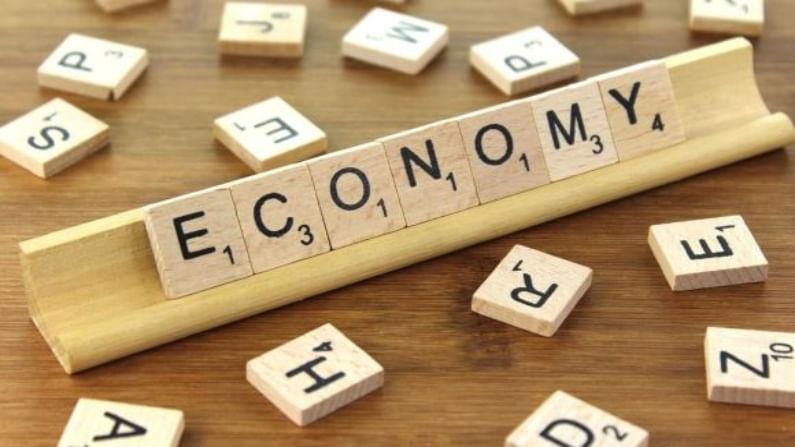Economic recovery: V — government’s dream; L — the nightmare
As the nation — government, economists and the opposition — keep discussing the possible theories of emerging from the slowdown, here are the A, B Cs of economic recovery

What was V in the early part of the year has changed into U now. No toddler’s period, we are talking of the economic recovery curves. As the nation slipped into the second savage run of the infection this year, the economic crystal balls began conjuring up shapes that quickly changed from V to U.
Some experts have even dug out images of W. A few have also brought up the topic of L.
But what do they mean? Let’s have a relook at the symbolic power of the letters.
V-shaped recovery
V is for victory, we all know, thanks to its display flashed by almost everyone – a politician emerging humbling the opposition at the hustings to a sportsman taking the Sergei Bubka-style vault or a footballer winning the World Cup.
No wonder the government was constantly referring to the V-shaped style of economic recovery when we walked into the delusion of a quick economic rebound at the beginning of the year. But if wishes were letters, governments would have picked up V to ride out of any recession, or slowdown.
A V-shaped recovery is marked by a quick and steep recovery in measures of economic performance (GDP, employment etc) after a sharp economic decline just as the letter V indicates.
Due to the speed of economic rebound, a V-shaped recovery is a best-case scenario in any recession. It is the administrator’s dream.
U-shaped recovery
Despite uttering V like a mantra, the second innings of the killer virus landed us in what economists are describing as U-shaped recovery.
The description of the U shape recovery was perhaps immortalised by Simon Johnson, former chief economist for the IMF. In an interview, he said a U-shaped recession is like a bathtub. “You go in. You stay in. The sides are slippery. You know, maybe there’s some bumpy stuff in the bottom, but you don’t come out of the bathtub for a long time.”
Borrowing Johnson’s metaphor, our recovery will depend on how slippery the sides are.
A U-shaped recovery is a type of economic recession and recovery that resembles the shape of U.
It is similar to a V-shaped recovery except that the economy spends a longer time struggling at the bottom rather than rebounding sharply like the laws of regular reflection we studied in school.
W-shaped recovery
A W-shaped recovery incorporates a sharp slide in economic indicators such as GDP, employment, industrial produce followed by a sharp rise back upward that is followed by a steep decline once again and ending with another sharp rise.
The W-shaped movements of the economy can be painful since the first rise after the first fall can be short lived and can lull people and investors into misleading confidence.
Theoretically, one may say that such a situation can arise if there is, God forbid, a third wave of the infection after the second wave of the infection subsides followed by a brief period of economic recovery.
L-shaped recovery
This can easily be categorised as the nightmare of any policymaker.
As the shape of the letter indicates, an L-shaped recovery is marked by stubbornly high unemployment rates, snail’s pace growth in economic activity after a steep fall in economic parameters.
In other words, a steep decline in different parameters is observed without a sharp recovery.
The Great Depression of the 1930s and the depression following the 2008 financial crisis are examples of L-shaped recoveries. The 10 years between 1991 and 2001 when the robust economy of Japan slowed down like a sloth is also referred to as an example of L-shaped recovery.
K-shaped recovery
K is for knight, white and shinning, a brave, kind man who can rescue you from a difficult situation.
A K-shaped recovery is said to occur when different sectors of the economy recover at different rates and times. It is called a K-shaped recovery since a curve with the parameters of economic indicators might move in different directions like the two arms of the letter K.
Download Money9 App for the latest updates on Personal Finance.
Related
- मैक्सिको के 50 फीसदी टैरिफ पर सरकार ने शुरू की बातचीत; जल्द समाधान की उम्मीद
- इंडो- US ट्रेड डील में पहले हट सकती है पेनाल्टी, रिपोर्ट में दावा
- रुपये ने फिर बनाया ऑल टाइम लो, जानें क्या है वजह
- बैंक कस्टमर के लिए बड़ी खबर, RBI हटाएगा ओवरलैप फीस,
- मैक्सिको ने अपनाई US जैसी पॉलिसी, 1400 से ज्यादा प्रोडक्ट लगाया भारी टैरिफ
- SpiceJet विंटर सीजन में जोड़ेगी 100 नई फ्लाइट्स! Indigo के कटे रूट्स का करेंगी भरपाई

